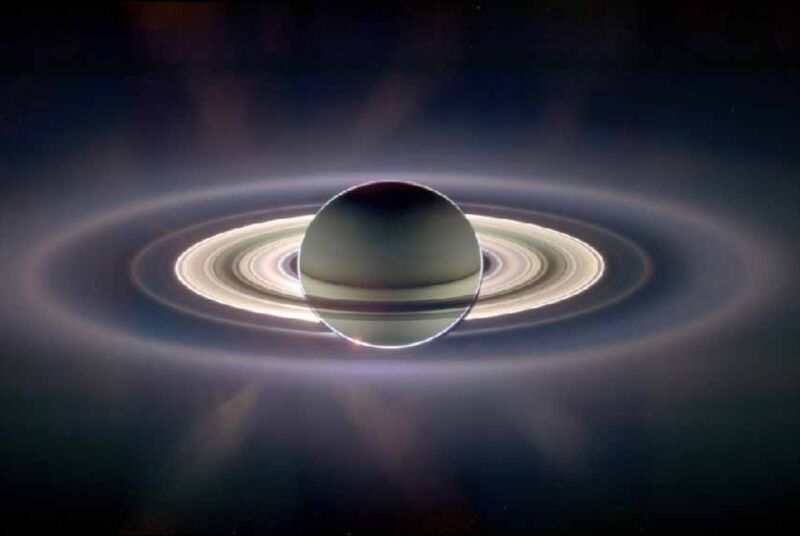More evidence emerges that Saturn’s rings are much younger than the planet

Enlarge / "Backlit" image of Saturn and its rings, taken by the Cassini spacecraft in 2006. (credit: NASA/Public domain)
Astronomers had long assumed that Saturn's distinctive rings formed around the same time as the planet some 4.5 billion years ago in the earliest days of our Solar System. That assumption received a serious challenge from a 2019 analysis of data collected by NASA's Cassini spacecraft, suggesting that the rings were formed just 10 million to 100 million years ago-a mere blink of an eye on cosmic time scales. Now, a fresh analysis of data on how much dust has accumulated on the rings confirms that controversial finding, according to a new paper published in the journal Science Advances.
"In a way, we've gotten closure on a question that started with James Clerk Maxwell," said co-author Sascha Kempf, an astronomer at the University of Colorado, Boulder. In 1610, Galileo Galilei was the first to observe the rings, though his telescope was too crude to identify them as actual rings. He described them as "Saturn's ears" since they looked like two smaller planets on either side of Saturn. Galileo was bemused when the "ears" vanished in 1612 as the Earth passed through the ring plane, even more so when they became visible again the following year.
Christopher Wren suspected that Saturn had a ring in 1657, though Christiaan Huygens beat him to publication, suggesting the ring was detached from the planet in his 1659 treatise System Saturnium, which also noted his discovery of Saturn's moon, Titan. Robert Hooke noticed shadows on the rings. By 1675, Giovanni Cassini had figured out that the ring was a series of smaller rings with gaps between them. Over a century later, Pierre-Simon Laplace would mathematically demonstrate that any solid ring would be unstable. Maxwell determined that the "ring" had to be made up of lots of small particles, all independently orbiting Saturn, confirmed by observations in 1859. We now know those particles are almost entirely made up of water ice.